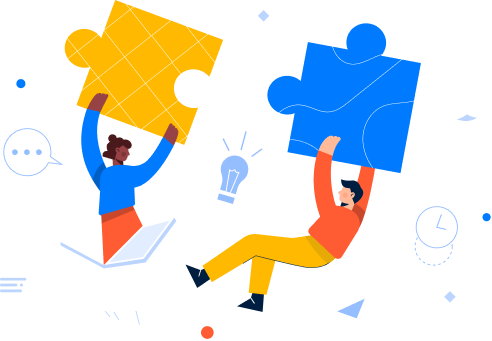
When we think about online learning, we often picture progress, passing quizzes, completing modules, and earning certificates. But what if failure plays a more important role than we realise? In 2025, forward-thinking educators and learning designers are paying closer attention to something called micro-failures. These small, manageable mistakes are proving to be powerful tools for learning and retention, especially in digital environments.
This blog explores what micro-failures are, why they matter, and how modern learning platforms can use them to improve outcomes.
Understanding Micro-Failures
Micro-failures are tiny missteps learners experience during their learning journey. These are not serious errors. Instead, they are gentle stumbles — a wrong quiz answer, a misinterpreted instruction, or an incorrect click during a simulation. These moments often go unnoticed, yet they have a surprising effect on how well we retain information and apply it later on.
When learners encounter micro-failures, something important happens. The brain shifts gears. Instead of passively consuming content, the learner becomes active. They begin to ask questions like, “Why didn’t that work?” or “What should I do differently next time?” This kind of thinking leads to deeper understanding and long-term learning.
The Psychology Behind Mistakes
Studies in cognitive science show that when people make a mistake and then receive immediate, helpful feedback, the lesson sticks better. The emotional discomfort of the mistake gives the brain a reason to remember what went wrong and why. This is known as the “generation effect” — the idea that struggling with a problem before seeing the solution improves memory more than simply being shown the right answer from the start.
Micro-failures also help to build confidence. When learners make small mistakes and are given the chance to correct them, they learn that failure is not the end of the road. It becomes a natural part of their growth. Over time, this builds resilience. Learners begin to feel more confident in trying new things and taking risks — two qualities that are essential in today’s fast-changing workplace.
How Online Learning Platforms Can Encourage Micro-Failures
In traditional learning systems, there is often too much focus on passing or failing. Learners might feel pressured to get everything right the first time, which can lead to stress and shallow learning. But an LMS designed with micro-failures in mind allows learners to experiment, make mistakes, and try again without penalty.
One effective approach is to use low-stakes assessments throughout a course. Instead of waiting until the end of a module for one big test, small quizzes or knowledge checks can be added after each lesson. These can give instant feedback and explanations, helping the learner see where they went wrong and why. This makes the learning process more interactive and reflective.
Another method is through simulations. These allow learners to practise real-life tasks in a virtual space where mistakes have no serious consequences. For example, a sales team can practise handling difficult customer calls using simulated dialogues. If they choose an ineffective response, they can see what would happen next and learn from it. This “safe space to fail” can dramatically improve performance in real-world situations.
It also helps when learners are allowed to repeat tasks or assessments. Giving them multiple chances to try again, along with supportive guidance, turns the platform into a space of discovery rather than judgement. Progress is measured not by how few mistakes someone makes, but by how much they grow from them.
What Instructors Can Do Differently
Even the best LMS needs human support. Instructors and course designers play a big role in creating a culture where micro-failures are accepted and valued. This begins with shifting the tone. Instead of marking wrong answers with red crosses and silence, instructors can provide warm, encouraging explanations. They can share personal stories of their own learning mistakes to help learners feel less alone.
It’s also helpful to create courses that reward curiosity and effort, not just perfection. Recognising learners who keep going after struggling — rather than just those who get full marks — encourages everyone to stay engaged.
A Real-World Example
One company working in tech support had a high course completion rate but still struggled with real-world errors. Employees passed the training exams but made mistakes during actual calls. The company redesigned their training to include interactive scenarios that allowed staff to try out difficult conversations. The first tries often went poorly, but learners received immediate feedback and could retry as many times as they needed.
Within weeks, the company saw better performance and shorter onboarding times. Staff felt more confident and were quicker to adapt to complex situations. What changed was not the content, but the way learners were allowed to interact with it — freely, with room to fail and grow.
Challenges to Watch Out For
Introducing micro-failures isn’t without its challenges. It’s important not to overwhelm learners with too many mistakes in a short period. The goal is to create just enough friction to spark reflection, not frustration. Feedback must be clear, constructive, and supportive. If a learner doesn’t understand why they failed, or if the tone feels punishing, the process becomes discouraging rather than motivating.
It’s also important to make sure the platform remains easy to use. If learners struggle with the interface, they might confuse technical issues with learning issues. Keeping the experience smooth and user-friendly ensures that the right kind of challenges come through.
Why Now?

In 2025, the speed of change in workplaces is faster than ever. Technology evolves, job roles shift, and employees need to adapt constantly. In this environment, the ability to learn quickly and effectively is more important than knowing everything already. Learning platforms that support trial, error, and reflection are no longer a luxury — they are a necessity.
By designing learning journeys that include space for micro-failures, companies can build teams that are curious, confident, and ready for anything.
Conclusion
Success in learning doesn’t come from getting everything right the first time. It comes from trying, failing, and trying again. Micro-failures give learners the chance to think more deeply, grow more confidently, and retain information more effectively. In a well-designed LMS, these small stumbles become stepping stones.
The future of learning is not about perfection , it’s about progress. And sometimes, a little failure is just what we need to move forward.
Bullet LMS Team



